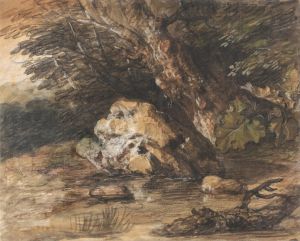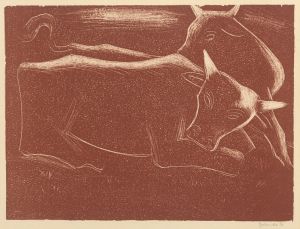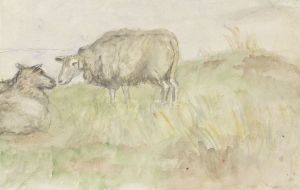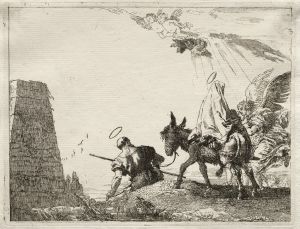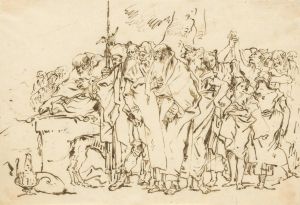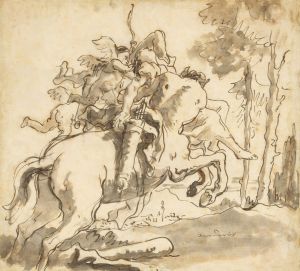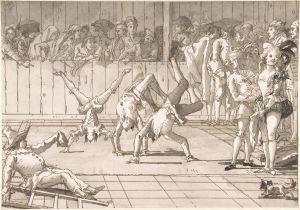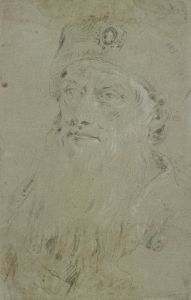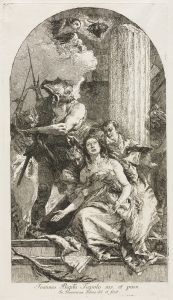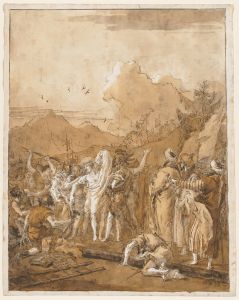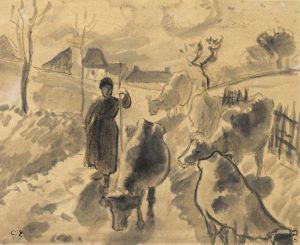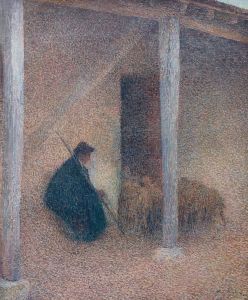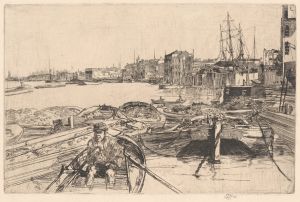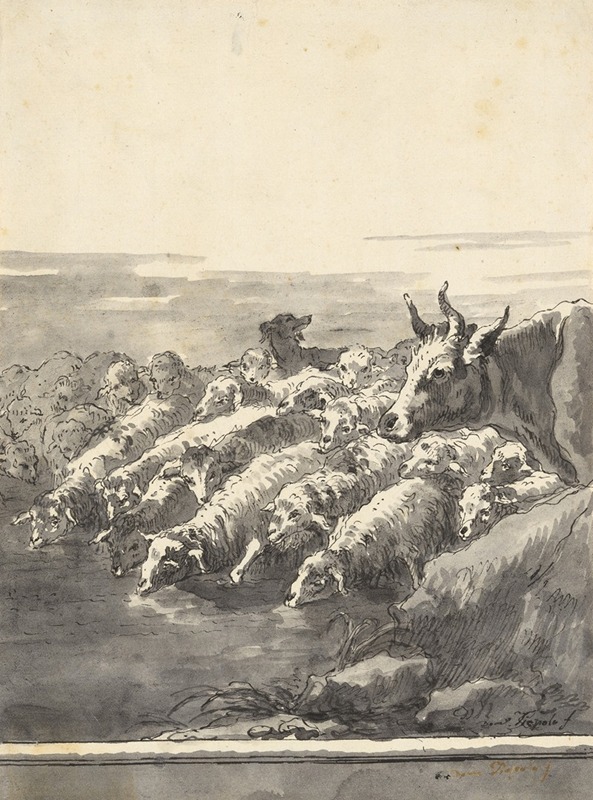
A Flock of Sheep Drinking at a Pool, with a Bullock and a Dog
A hand-painted replica of Giovanni Domenico Tiepolo’s masterpiece A Flock of Sheep Drinking at a Pool, with a Bullock and a Dog, meticulously crafted by professional artists to capture the true essence of the original. Each piece is created with museum-quality canvas and rare mineral pigments, carefully painted by experienced artists with delicate brushstrokes and rich, layered colors to perfectly recreate the texture of the original artwork. Unlike machine-printed reproductions, this hand-painted version brings the painting to life, infused with the artist’s emotions and skill in every stroke. Whether for personal collection or home decoration, it instantly elevates the artistic atmosphere of any space.
Giovanni Domenico Tiepolo's painting A Flock of Sheep Drinking at a Pool, with a Bullock and a Dog is a work that exemplifies the artist's skill in depicting pastoral scenes and animals with a sense of naturalism and charm. Giovanni Domenico Tiepolo (1727–1804) was an Italian painter and printmaker, the son of the renowned Venetian artist Giovanni Battista Tiepolo. While his father was celebrated for grandiose frescoes and religious compositions, Domenico often explored more intimate and genre-based subjects, including scenes of rural life.
This particular painting portrays a tranquil rural setting where a group of sheep gathers around a pool to drink water. Accompanying the flock is a bullock, a common working animal in agricultural life, and a dog, which may have been included as a symbol of loyalty or as a practical element of shepherding. The composition reflects Domenico's ability to capture the quiet rhythms of countryside life, a theme that recurs in his body of work. The animals are rendered with attention to detail, showcasing Domenico's keen observation of nature.
Domenico Tiepolo's works often exhibit a softer and more personal approach compared to his father's dramatic and theatrical style. In A Flock of Sheep Drinking at a Pool, with a Bullock and a Dog, the artist employs a delicate use of light and shadow to create a serene atmosphere. The painting's palette is likely subdued, emphasizing earthy tones that align with the rural subject matter. This choice of color and composition underscores the simplicity and harmony of the natural world.
The exact date of this painting is not definitively documented, but it is consistent with Domenico's later works, which frequently focused on pastoral and genre scenes. These works often reflect the influence of 18th-century Venetian art, with its emphasis on light, texture, and a sense of immediacy.
As with many of Domenico Tiepolo's paintings, this piece may have been created for a private patron or collector who appreciated depictions of bucolic life. Such scenes were popular during the 18th century, as they evoked an idealized vision of the countryside, contrasting with the complexities of urban life.
The painting is an example of Domenico's ability to combine technical skill with a gentle narrative quality, making it a significant, though perhaps less widely known, part of his oeuvre. It reflects the artist's interest in everyday life and his talent for imbuing simple scenes with a sense of quiet dignity and beauty.





